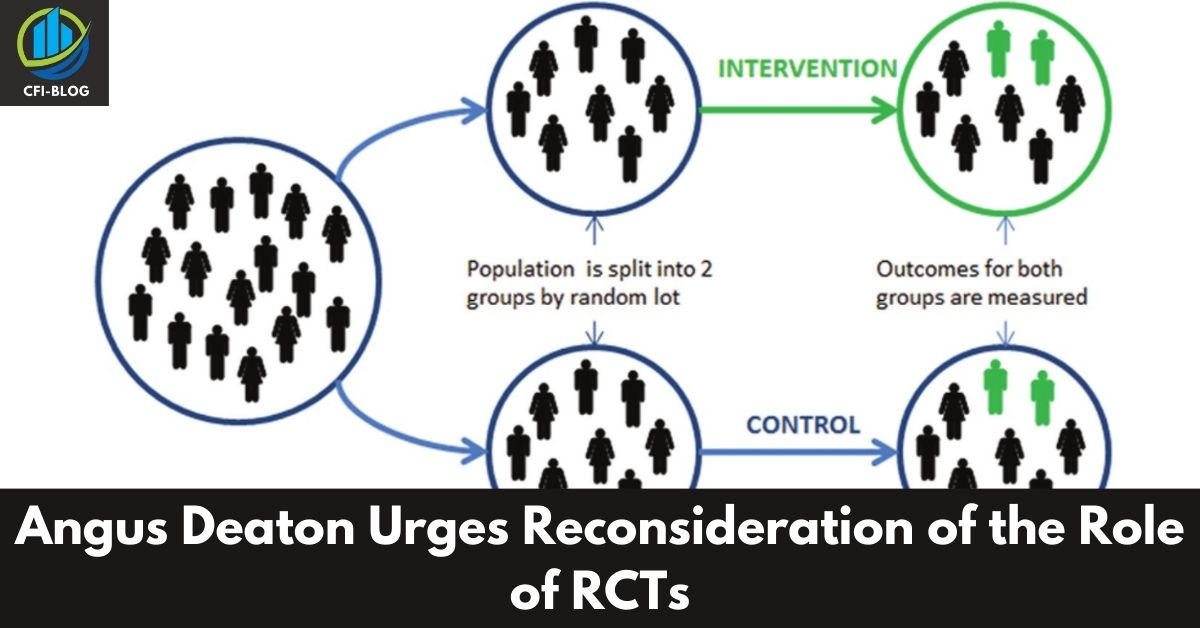Labor markets and economic evaluation constantly need surveys, studies, research, etc. But to compile information on such a dynamic scale requires hoards of data sets that are not readily available. Here’s where RCT, or randomized controlled trials, come in. Randomized Controlled Test is becoming popular for various implementations, such as welfare programs and labor markets to gauge unemployment data or domestic consumption. Randomized controlled trials were used in the 1960s regarding numerous income tax surveys in 1968 and later in 1989.
Since then, the floodgate was opened. It has found numerous applications in statistically gathering data for the labor market and social programs such as social security, insurance, and so on. The tests have been implemented in the economics, developmental, and healthcare community recently. Randomized controlled tests have been used during the ebola crisis and other pathogenic outbreaks. This is what it is like to be a digital immigrant in a developing country.
What are Randomized Controlled Tests?

A randomized controlled test is a scientific and statistical data-gathering technique where to conclude an experiment, some factors are kept out of the equation and out of the experiment’s control. Randomized controlled tests or RCT are used in clinical trials, especially crucial trials of drug effects, surgical methods, medical devices, and some diagnostic procedures. Those who participate in the experiment are kept aloof from the subject from the experiment and are different from one another, thereby not influencing the outcome of the experiment in any way.
By randomly optimizing and allocating the participants, the research makes obtaining the results of the experiments easier by not allowing external forces to interfere. However, the entire setup must be adequately designed, and the experiment must be conducted appropriately. Only then can RCT can deliver accurate results. RCT speeds up the process of drug manufacturing, making medicines available for the common masses and making financial inclusion from a consumer perspective.
Procedures and Examples
A randomized controlled test divides the participants into two groups, comparing the results to a pre-existing conclusion. The two groups are participants are named experimental and controlled treatments. In medical experiments, a placebo may be used when previous products or treatments are unavailable so the participants are not privy to their treatment.
This blindness of the participants is also extended to other people undertaking the experiments, such as researchers, technicians, data analysts, and other evaluators. Blindness is crucial in these types of experiments and shields the research from the researchers’ psychological bias and enables isolation of the treatment or effects of the experiments.
The random selection of participants reduces selection biases of the researchers and technicians, which can hinder the experiments. It also reduces the allocation bias many researchers suffer, keeping with the equilibrium of known and unknown prognostic factors. Experimental blinding also reduces experimenter bias as well as subject bias.
History
The first randomized controlled test was conducted in 1747 to treat scurvy by a Scottish doctor named James Lind. But the experiment was reminiscent of the modern blind version of the randomly controlled tests. The first controlled blind testing was conducted by the French Royal Commission on Animal Magnetism by 1784, a commission appointed by King Louis XVI, consisting of a few renowned physicians of France. Blinding research was further supported and endorsed by Claus Bernard in the later half of the 19th century.
Bernard suggested that the experiment observer should not know the participants and the experiment’s hypothesis to eliminate the subject’s bias. This suggestion was in a severe collision with the general Enlightenment Era understanding that well-educated scientists and educators. Weirdly enough, the experiment was conducted to investigate the effects of caffeine. The experiment was conducted by William Halse Rivers Rivers, an English anthropologist, in 1907.

Randomized Controlled Tests appeared in psychology in the subsequent years, with Charles Spencer Pierce and Joseph Jastrow introducing them in the 1880s. Ronald R. Fisher popularised randomly controlled tests by the early 20th century because of his writings in agriculture. Randomized controlled trials were used in the 1960s regarding numerous income tax surveys in 1968 and later in 1989.
Since then, the floodgate was opened. It has found numerous applications in statistically gathering data for the labor market and social programs such as social security, insurance, and so on. The tests have recently been implemented in the economics, developmental, and healthcare community. Randomized controlled tests have been used during the ebola crisis and other pathogenic outbreaks.
So, the first formal appearance of a randomized control test happened in 1948 during the trial run of Streptomycin for the treatment of tuberculosis. 2004 saw a massive surge in RCT, with over 150,000 random controlled tests conducted for different experiments. All of the records of the tests are survived and preserved by the Cochrane Library. An international consortium of researchers, doctors, and physicians was formed to preserve all of the records of the tests done with randomized controlling tests called Consolidated Standards of Reporting Trials (CONSORT) published their report in 1996, 2001, and 2010.
Ethics
Although it has been established as the golden standard for testing and efficient result-yielding experiments, randomized controlled tests still have issues. One of the common justifications for RCTs was based on the principle of clinical equipoise. But recently, the clinical equipoise has been debunked and cannot be considered a justification for random tests. The participants were often never informed what they were signing up for. Many such participants had severe side effects, which they were never reimbursed for.
Finally, it was discovered that some participants were given substances they never consented to. In such testing, Zelign’s design was used for the testing. Testing failures not only occur in developing countries but also in developed countries where the US financial diaries project highlights the precarious financial state of US families.
In 2004, a tribunal was commissioned to listen to the cases pertaining to the unethical usage of participants to dose substances they never consented to. The trial started on July the first, 2005, and constituted 12 members of the journal committee. During the trials, it was revealed that many of the participants were not selected according to the rules. Those who participate in the experiment are kept aloof from the subject from the experiment and are different from one another, thereby not influencing the outcome of the experiment in any way.
By randomly optimizing and allocating the participants, the research makes obtaining the results of the experiments easier by not allowing external forces to interfere. However, the entire setup must be adequately designed, and the experiment must be conducted appropriately.
The random selection of participants reduces selection biases of the researchers and technicians, which can hinder the experiments.
It also reduces the allocation bias many researchers suffer, keeping with the equilibrium of known and unknown prognostic factors. Experimental blinding also reduces experimenter bias as well as subject bias. RCT is also working in campaigns for global health improvement, where ultra-poor graduation is the strongest case so far for why financial services must be a part of the solution to extreme poverty.
Frequently Asked Questions (FAQs)
Q1. What are the roles of an RCT?
Random controlled testing is the testing conducted with different participants of the experiments selected randomly without any criteria so that the experimental results can be yielded without any bias. By randomly optimizing and allocating the participants, the research makes obtaining the results of the experiments easier by not allowing external forces to interfere.
Q2. What is the importance of RCT in research?
RCT is the golden standard in clinical testing, such as human trials, medical devices, and surgical techniques. Randomly selected participants are hired to experiment on them with the interference of outside factors.
Q3. What are the three principles of RCT?
The three principles of RCT are:
- The sample must be selected and thus can be generalized and applied to all situations.
- The group must be selected to optimize and eliminate selection bias to yield pure results without external contamination.
- Both control and the experimental groups are kept identical.
Conclusion
Randomized controlled tests are golden standards for yielding an accurate result of an experiment. But randomized control ignores one common factor, i.e., the environment. An experiment that may be successful in one environment may not be successful under different circumstances. The conclusion of one experiment cannot be extrapolated to another problem in another circumstance.
This gap creates a rift between RCT and policymaking, becoming an issue with implementation. Also, there are limitations to how much biased randomized controlled tests can eliminate. One such bias is called the differential loss to follow-up. Researchers must keep the selected group as identical as possible to prevent data loss.
Author Profile

- Jonas Taylor is a financial expert and experienced writer with a focus on finance news, accounting software, and related topics. He has a talent for explaining complex financial concepts in an accessible way and has published high-quality content in various publications. He is dedicated to delivering valuable information to readers, staying up-to-date with financial news and trends, and sharing his expertise with others.
Latest entries
 BlogOctober 30, 2023Exposing the Money Myth: Financing Real Estate Deals
BlogOctober 30, 2023Exposing the Money Myth: Financing Real Estate Deals BlogOctober 30, 2023Real Estate Success: Motivation
BlogOctober 30, 2023Real Estate Success: Motivation BlogOctober 28, 2023The Santa Claus Rally
BlogOctober 28, 2023The Santa Claus Rally BlogOctober 28, 2023Build Your Team – the Importance of Networking for Traders
BlogOctober 28, 2023Build Your Team – the Importance of Networking for Traders

